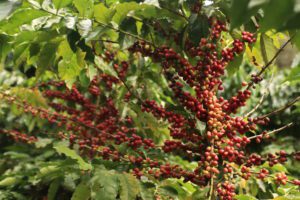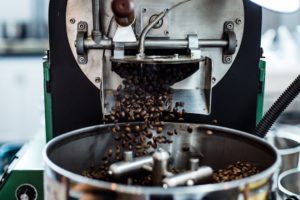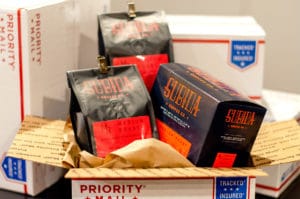Decaffeinated coffee causes conversations among coffee lovers. “When did you switch to decaf?” is asked around office coffee pots and while waiting for baristas to whip up coffee at a shop. Decaf is also a cause for conversations among family members on vacations or during the holidays. Well, maybe those are mostly debates and arguments! Decaf is a saving grace for those who love coffee but can’t risk the effects of a jolt of caffeine.

Coffee used to be decaffeinated with benzene, which has several bad side effects. It was also linked to cancer. Since decaffeination methods were once shrouded in toxins, it’s important to discover whether the bad reputation of decaf should persist today.
We will cover when and how coffee may arrive at being labeled decaffeinated. Which of the several decaffeination methods was used should be clearer to purchasers. Unfortunately, that isn’t always the case; decaffeination methods often stay obscure. The method is not often not printed. Let’s examine the currently used decaffeination processes to see whether they pose health risks. If further research into the decaffeination method used by your favorite brand is necessary, you’ll be informed about whether you should worry or switch coffees.
Shared Decaffeination Characteristics
The origins of methods of decaffeinating coffee are debated. For certain, by the early twentieth century, it had been discovered that caffeine can be removed from coffee by soaking it in water. The process was implemented for commercial purposes. However, coffee risks losing its flavor when hydrated too much. Decaf drinkers hope to enjoy tastes similar to regular coffee. After all, they’d have stopped drinking coffee if they weren’t after coffee’s flavor and scent. It’s already a morning ritual for many who find they need to switch.
The task of folks carrying out decaffeination is to remove caffeine with water and perhaps with other substances too. Water easily enlarges the cells of coffee beans so that caffeine can escape. Preserving the flavor throughout the process is the trick. Those carrying out decaffeination also seek to leave nutrients like sugars and proteins that are also water-soluble in the coffee after caffeine extraction is complete. It’s not easy to strike this balance in the decaffeination process.
Decaffeination Methods
Green coffee is always selected for decaffeination before roasting. There are two categories of caffeine-extraction processes. Some rely on solvents to extract caffeine. They may or may not let the solvents touch the beans. Other, healthier methods don’t use such chemicals.

Decaffeination Processes with Solvents
Soaking coffee beans in a solvent that’s a chemical like ethyl acetate, or methylene chloride is one option. These are agents that accelerate the decaffeination process (activated charcoal is another, less commonly used one). If water alone were left to do the work over a long period, the beans could end up too washed out and flavorless. However, by letting the accelerating chemicals directly touch the beans, there is a greater risk of chemical traces getting lodged in the beans.
Sometimes this risk is circumvented by avoiding contact. In that case, only the water containing the caffeine is exposed to the solvent. This constitutes the second of the four methods of decaffeination.
Risks with Chemicals Used in Decaffeination
Whether it is applied to the beans directly or through water, methyl chloride poses the biggest health risk. It is a component in paint and adhesives. It’s thought to depress the central nervous system. Ethyl acetate, on the other hand, does appear naturally in vegetables. However, its synthetic counterpart is not healthy in large quantities.
Nevertheless, present-day chemicals aren’t as destructive as those used in the past that gave decaf a worse reputation. The FDA only lets tiny amounts of chemicals remain in approved coffees. However, extra caffeine does often remain beyond the FDA’s mandate that 97% be extracted. If a regular cup of coffee contains around 90-95mg of caffeine, and up to 12mg routinely remains, it seems like drinking a smaller quantity of regular coffee might be a better, healthier solution.
Processes without Solvents
Liquid carbon dioxide can be applied after green coffee beans have soaked in water for hours. During the carbon dioxide process:
The supercritical carbon dioxide method uses carbon dioxide (CO2) under high temperatures and pressure to act like both a gas and a liquid. This supercritical CO2 reaches into the crevices of coffee beans like a gas but dissolves caffeine like a liquid.
Once the CO2 works its magic after a few hours, the caffeine will evaporate along with it. The result is beans that haven’t had their nutrients and flavoring altered.
The final process of the four is the only one with a catchy name: “The Swiss Water Process.” Hot water immersion pulls out caffeine and flavor from the beans. That water is then filtered to extract the caffeine. The filtered water is still so flavorful that it is used to flavor a subsequent batch of beans.
The Swiss Water Process’s assembly-line-like process is the best at preserving flavor. The taste is almost as rich as regular beans that weren’t treated, as in regular coffee. It’s also very safe, health-wise. However, it’s difficult to implement on large batches of coffee. It’s not a process that those concerned with efficiency and cost can use often.
Decaf Labeling Issues
The unfortunate issue with decaf coffee is there are no requirements about labeling the bags with information about the decaffeination process. If chemicals were used, the seller doesn’t have to print or admit it.
The best way to guarantee that beans haven’t been subjected to chemicals is to go with single-origin coffees, so that the conditions under which the coffee was grown can be easily traced. Although they are pricey and rarer, decafs with true organic status are safe too.

Is Decaf Worth it?
Many folks who are passionate about their special mugs of coffee, or who have loved drinking coffee for decades, decide they must switch to decaf for one reason or another. Sometimes, it’s unavoidable. When that’s the case, it’s crucial to locate a coffee whose origin and treatment are clear. Sometimes an inquiry to the company can reveal information that is not available on the package.
We don’t think we’d switch to decaf unless it is mandated by doctor’s orders! Coffee is already commonly subjected to pesticides and herbicides. That’s because in the region where it’s grown in Latin America, coffee is one of the most high-value crops. Farmers will take powerful measures to protect their crop—although frankly, we can’t always blame them. For drinkers who just want to cut back on caffeine, a single-origin coffee drank in smaller portions may do the trick.
Subida – Certain Sourcing & A Great Cause
Subida Coffee Co. is gourmet single-origin coffee produced outside of beautiful Santa Rosa de Copán, Honduras. It has been producing tobacco since the eighteenth century and has other coffee-related exports. The coffee purchases help support the education and agricultural education of youth at The Moses Project, a program of Subida’s operating nonprofit, Mission UpReach, Inc. . There’s a promising future for agriculturally educated growers of coffee in Honduras.
Supporting the non-profit that produces Subida coffee doesn’t mean sacrificing flavor and quality. The extra care that the agricultural engineers and their teams deliver makes the difference. The plants are cared for by hand. Hands also select each coffee cherry at the peak of ripeness and the beans that make it into the bag. They are then roasted in small, controlled batches.
When you can’t shop locally for coffee, choose to purchase one that supports great causes: educating Honduran youth and employing local adults. These efforts can have positive ripple effects in a deserving community. Coffee often brings people together, whether it’s in kitchens, cafes, or across national borders for a great cause.

